Date Palm
The 1890s Date Palm Plantations of Northern South Australia
The date palm (Phoenix dactylifera) has been cultivated in the Middle East and the Indus Valley for many thousands of years and may well be the most ancient cultivated tree in the world. It is well adapted to growing in very hot and dry climates although requiring irrigation to be productive. In the 1890s attempts were made to bring date palms into cultivation in the arid inland of South Australia, ultimately without success. A few remnants of the South Australian plantations remain today.
From the 1870s pastoral leases were established in the north of South Australia and with the settlement of the land by Europeans came interest in agricultural opportunities in addition to those of livestock. The 1870s was a time of some interest in the introduction and acclimatisation of interesting and useful plants, with the Director of the Botanic Gardens, Dr M R Schomburgk, building the palm house (opened 1877) at the Botanic Gardens to propagate and display new plants. In the north of the state it was thought that the upwelling of artesian waters would provide a water resource that might be used to irrigate suitable crops and in the early 1890s the SA Government proposed a program to establish fruit growing along the outback rail and overland telegraph lines.
In 1890 a Member of the Legislative Council of the SA Parliament, Mr GW Cotton, requested Parliament prepare a report on the cultivation of the date palm in the north of South Australia.
The subsequent report (Cultivation of the date palm in the interior of Australia by artesian and other waters 1890) drew on publications obtained from the French Government on cultivation of the date palm in Algeria, then a French colony. The report extolled the virtues and successes of date palm production in the Sahara by French colonists and companies, made possible through irrigation utilising artesian groundwaters accessed by the sinking of new bores and wells at Saharan oases. The quality of these waters was reportedly poorer than that of the artesian waters in the north of South Australia and the glowing report of the benefits of date production no doubt encouraged interest in the production of dates in the north of South Australia.
The South Australian government constructed ten bores between Hergott Springs and Goyder Lagoon between 1889 and 1916 to assist in moving stock from the Channel Country in south-western Queensland down to the railhead at Hergott Springs, commencing with the Hergott Town Bore which supplemented the railway bore. The drill teams put down a second bore at Lake Harry (30 km north from Hergott Springs) in 1890. This artesian bore was to a depth of 415 m, yielding a supply of 500 kL a day. The bores at Hergott Springs and Lake Harry, and later at Coward Springs and Oodnadatta, provided a source of irrigation water for date palm plantations. At Lake Harry the Government gazetted an area of around 50 ha for an experimental date plantation and appointed a manager and other workers to develop the site. The plantations were managed by the Woods and Forests Department, under the direction of Walter Gill, the Conservator of Forests, from 1890 to 1923.
The initial plantings of date palms in the north were Adelaide Botanic Gardens seedlings, at Hergott Springs in 1890. The Woods and Forests Department Parliamentary Report of 1891 indicates 300 date palms had been established. Some date palms were at that time established at the Finke River Mission Station and there was interest in establishing plantings from other station owners in the north. As the quality of dates from palms grown from seed was often poor and plantations were better established from suckers or offshoots from palms of known performance, in 1891 an Afghan man from Hergott Springs was commissioned to travel to Karachi to purchase and import the best varieties. The following year 236 offshoots arrived and were planted at Hergott Springs.
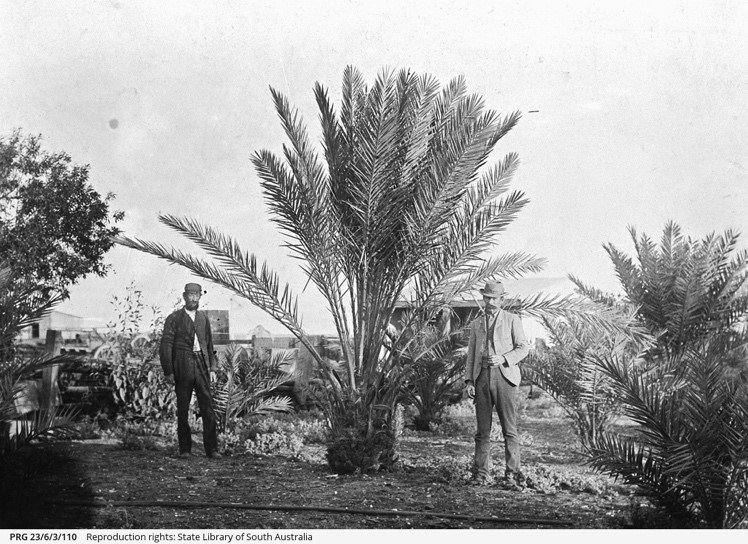
Date palms at Hergott Springs, ca 1895. (State Library of South Australia PRG 23/6/3/110)
The South Australian Government, through the Woods and Forests Department, also sought to source 500 date palms of the cultivar Deglet Noor from Algeria to which the French Government agreed. At the same time the NSW Government was also seeking date palms and eventually, each State was able to receive 50 plants, the number presumably limited by the availability of nursery stock. The plants were from a nursery established by the French Government in Biskra, Algeria to provide planting material to the French colonists then establishing orchards and plantations. In 1894 the Algerian date palms were shipped to Marseille, and then to Adelaide on the steamship Ville dela Clotat. Initially they were held at the Adelaide Botanic Gardens before being railed to Hergott Springs to be planted at Lake Harry, as an experimental plantation.
Later plantings were at Oodnadatta and Coward Springs.
Lake Harry also was the site of a camel depot that supplied camels for government engineers sinking bores along the Birdsville Track until about 1919.
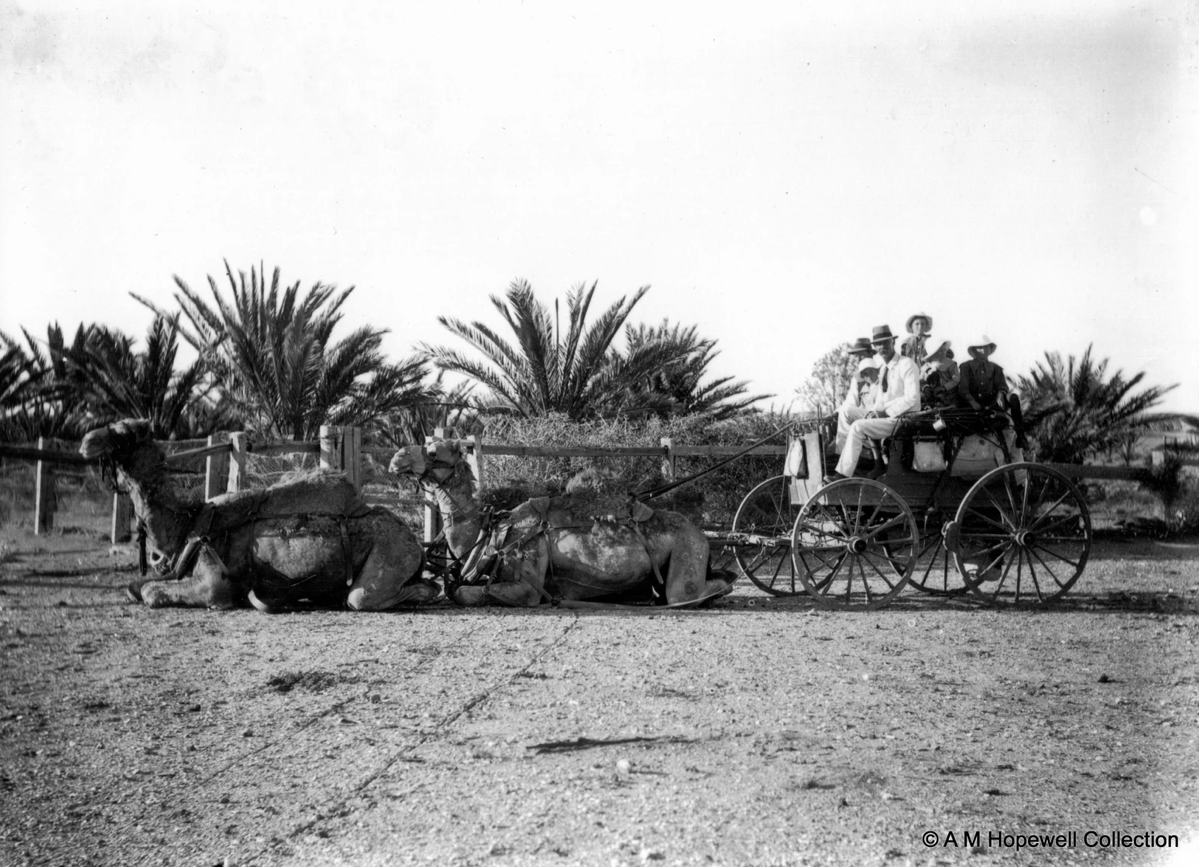
Lake Harry experimental date plantation ca 1910. (AM Hopewell Collection)
By 1895 there were fruiting date palms at Hergott Springs (262 palms) and the Lake Harry plantation (52 palms from Algeria) had been established. Further plantings of seedlings at both sites continued, with eventually over 3000 plants in production. A further plantation was established at Oodnadatta, but with only a small number of plants. Each year a report prepared by the Conservator of Forests of progress and production statistics was tabled in the South Australian Parliament. The reports were initially most enthusiastic as to progress and opportunity but later foreshadowed the problems of managing a date plantation in such remote and difficult locations.
The Hergott Springs and Lake Harry plantations produced high quality dates for 25 years, the fruit being sold locally and through Adelaide. However the amount of water available from the artesian bores for irrigation was insufficient for the area of palms and birds (crows and corellas) became destructive. Soil salinisation and dust storms took a toll. After 1914 many men from the north left to fight in the war and maintaining the northern date palm orchards was no longer feasible. In 1914 the Parliament concluded on advice from the Conservator of Forests that due to the harsh environment in the far north, date production would be transferred to the Murray River. At the time the northern plantations were abandoned there were some 3000 date palms spread over several locations in the far north- Hergott Springs, Lake Harry, Coward Springs and Oodnadatta. These palms were well established and bearing fruit each year.
Most of the superior Deglet Noor palms were transplanted in the Riverland during 1915. The remainder of the palms were abandoned, although the Lake Harry site remained occupied at least until the 1930s. It was initially intended the palms be reestablished at the Woods and Forests Department’s Murtho Forest Reserve but instead some were planted at the Department of Agriculture Berri Experimental Orchard and others along water supply channels in the irrigation districts.
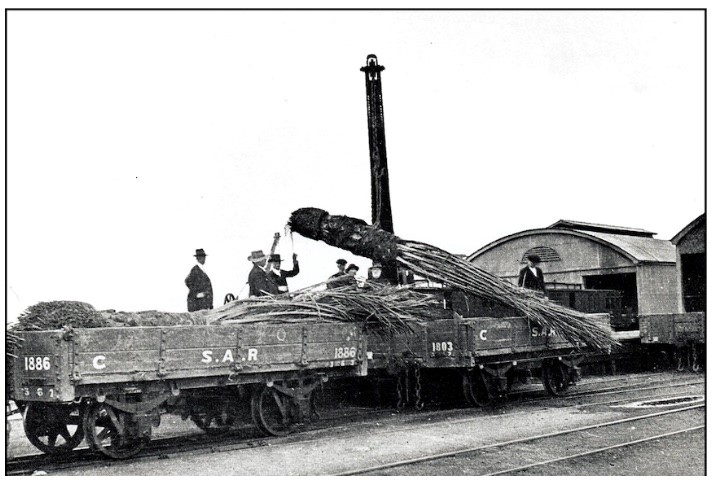
Lake Harry date palms at the break of rail gauge at Terowie SA, en-route from Lake Harry to Morgan, 1915. From Morgan the palms went by riverboat to Renmark. (Berri Barmera Local History Collection)
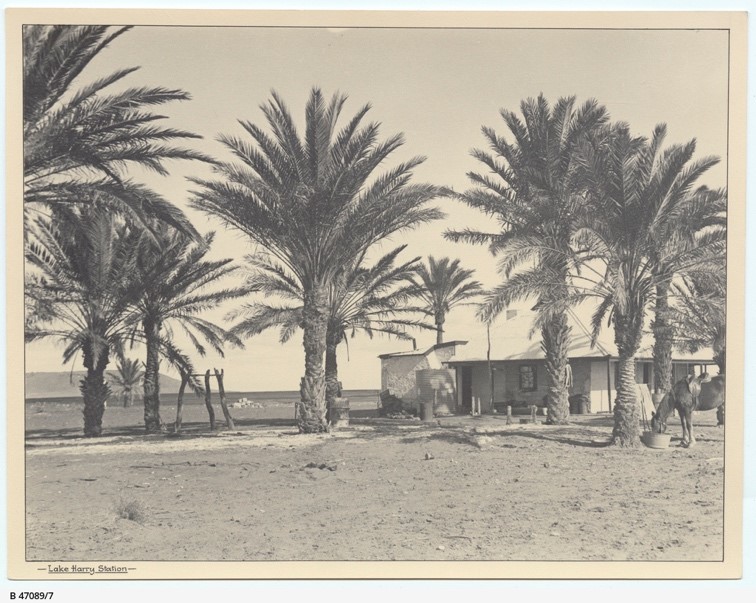
Lake Harry Station date palms ca 1930. (State Library of South Australia B47089/7)
By 1916 the Lake Harry experiment was seen as an expensive failure. Nothing remains of the Lake Harry plantation today. However, as a reminder of this era, four palms from the original plantings transplanted to the River Murray in 1915 remain at Barmera, and a few palms remain at Coward Springs and at Marree. There are also date palms well established on some other mound springs in the north, where concern regarding water use has been expressed and some control and removal has been necessary.
The Deglet Noor plantings at Pera Bore in New South Wales, near Bourke, also failed.
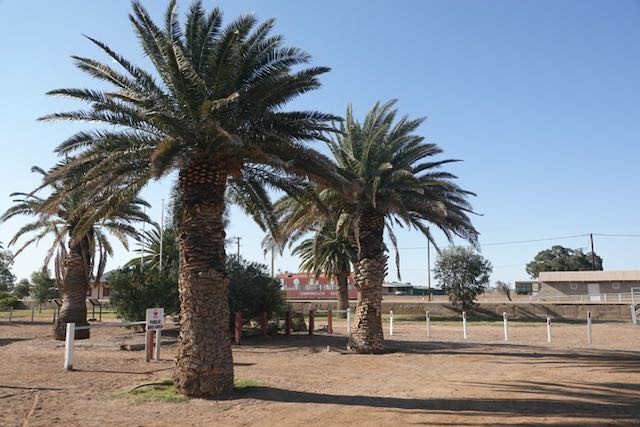
Canary Island palms (Phoenix canariensis) at Marree (formerly Hergott Springs), transplanted from elsewhere in ca. 1990s in commemoration of the date plantations of the 1890s. 2021. (PJ Cole)
The date palm is an important world crop today, with a world production of around 8.5 million metric tons, often sold dried and processed. The main production areas are the countries of the Middle East and North Africa, other production areas include the southern United States. Production in Australia remains quite limited, despite an apparent climatic suitability and market opportunity. The Gurra Downs Date Company at Gurra Lakes in the Riverland is the most significant South Australian plantation.
Prepared by Phil Cole
January 2022
Other reading
- Newspaper articles 1890-1916 accessed through Trove (National Library of Australia)
- Various publications accessed through the Gurra Downs Date Company website (www.gurradowns.com.au)
- Heritage Surveys published by the Department of Environment and Natural Resources
- Photographs State Library of SA and AM Hopewell Collection
